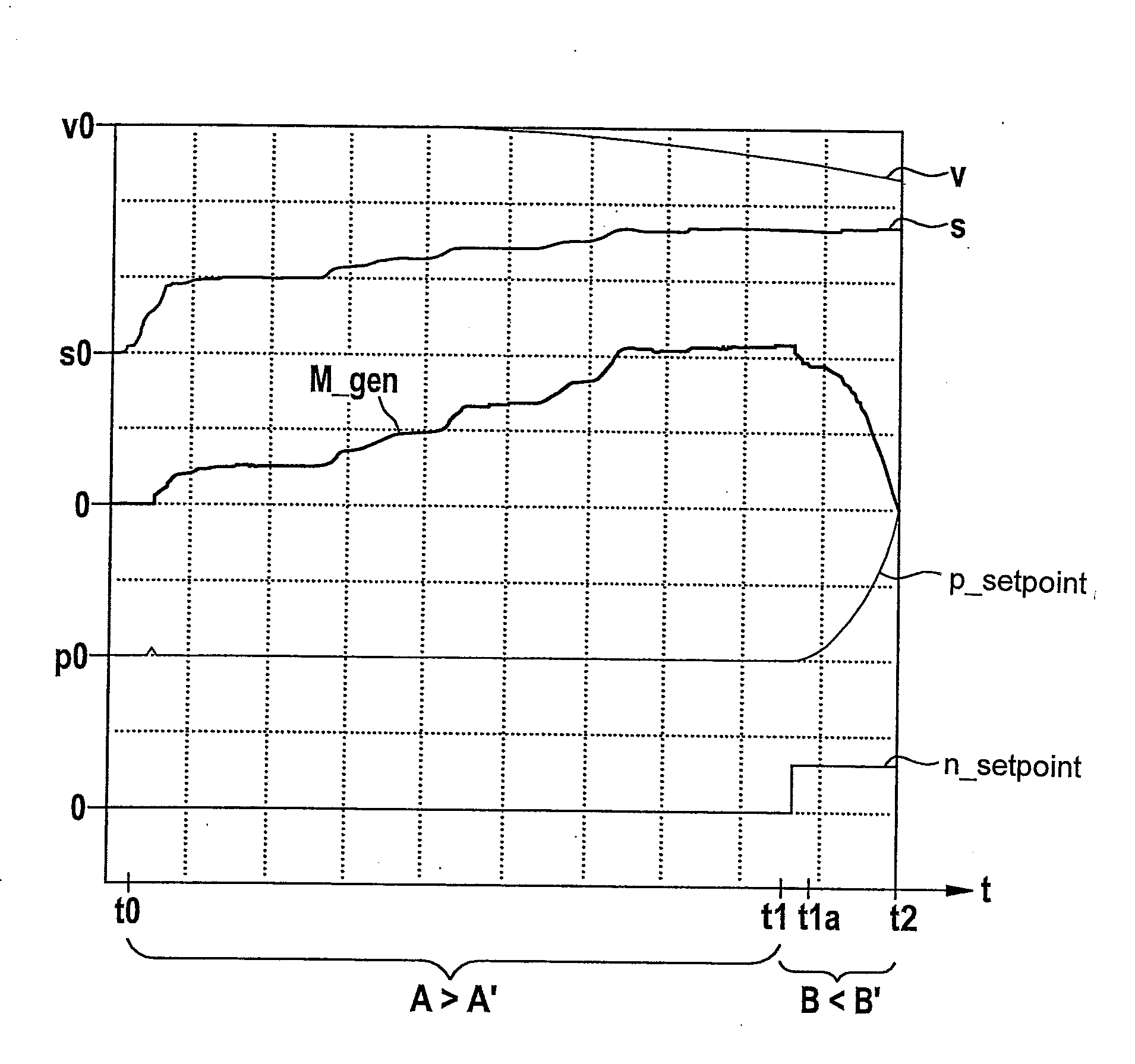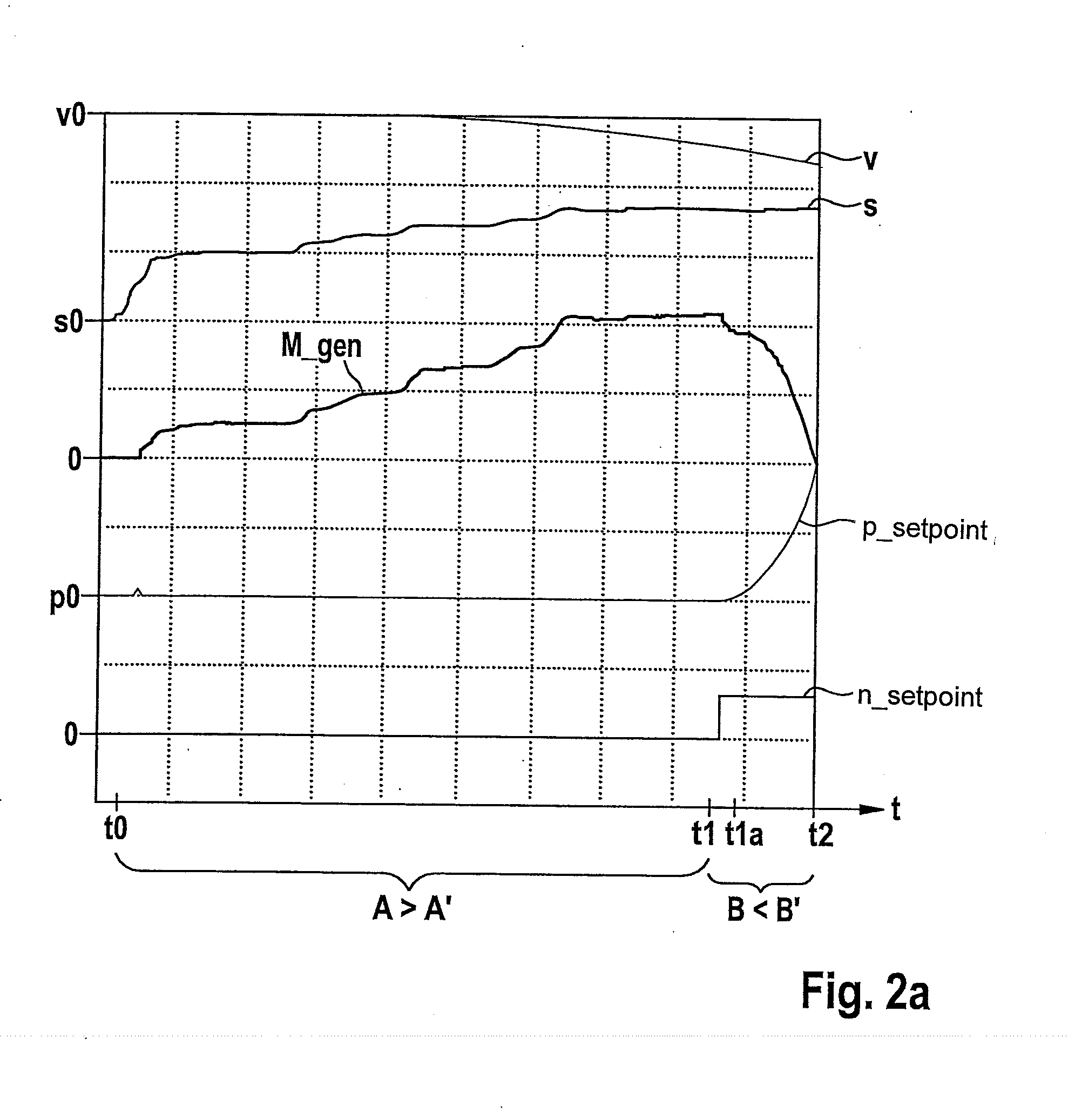Method for operating a regenerative braking system of a vehicle and control unit for a regenerative braking system of a vehicle
a regenerative braking and control unit technology, applied in the direction of braking systems, instruments, analogue processes for specific applications, etc., can solve the problems of m_gen applied generator braking torque, and achieve the effect of increasing the actual brake pressure over time, and reducing the generator braking torqu
- Summary
- Abstract
- Description
- Claims
- Application Information
AI Technical Summary
Benefits of technology
Problems solved by technology
Method used
Image
Examples
Embodiment Construction
[0025]FIGS. 2a and 2b show coordinate systems for illustrating the method for operating a hydraulic braking system of a vehicle.
[0026]The method represented schematically in FIG. 2a is implementable via a plurality of braking systems of different types. The implementability of this method is therefore not limited to a certain design of the braking system used here for this purpose. In particular the coordinate system of FIG. 2b represents only a pressure-volume characteristic line k of a braking system, for which the implementation of this method is particularly advantageous. However, the implementability of this method is not limited to such a pressure-volume characteristic line k of the braking system used for this purpose.
[0027]FIG. 2b represents a pressure-volume characteristic line k of a regenerative braking system for which the use / implementation of the method described below is particularly advantageous. The abscissa of the coordinate system in FIG. 2b indicates a brake flui...
PUM
 Login to View More
Login to View More Abstract
Description
Claims
Application Information
 Login to View More
Login to View More - R&D
- Intellectual Property
- Life Sciences
- Materials
- Tech Scout
- Unparalleled Data Quality
- Higher Quality Content
- 60% Fewer Hallucinations
Browse by: Latest US Patents, China's latest patents, Technical Efficacy Thesaurus, Application Domain, Technology Topic, Popular Technical Reports.
© 2025 PatSnap. All rights reserved.Legal|Privacy policy|Modern Slavery Act Transparency Statement|Sitemap|About US| Contact US: help@patsnap.com



